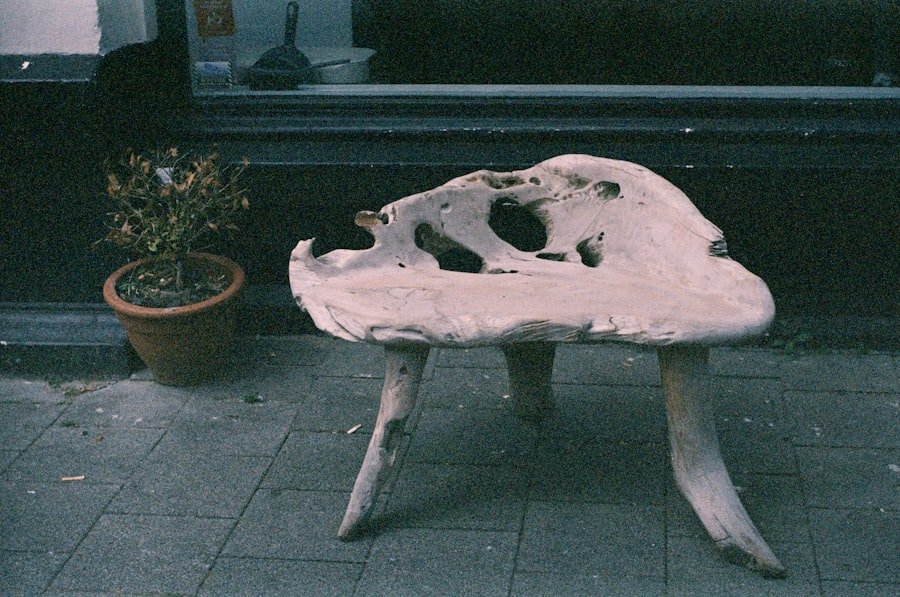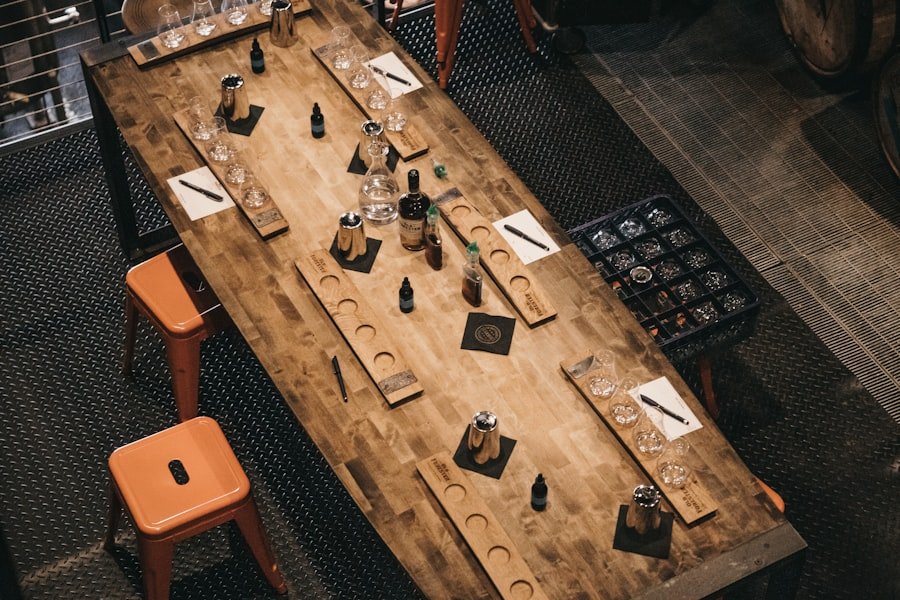Now Reading: Creating a Balanced Loot System: Essential Elements
-
01
Creating a Balanced Loot System: Essential Elements
Creating a Balanced Loot System: Essential Elements

In the realm of gaming, loot systems serve as a fundamental mechanic that enhances player engagement and satisfaction. As I delve into the intricacies of these systems, I find myself fascinated by how they can transform a simple gameplay experience into an exhilarating adventure. Loot systems are not merely about acquiring items; they encapsulate the thrill of discovery, the joy of progression, and the satisfaction of achievement.
Whether it’s a rare sword in a fantasy RPG or a coveted skin in a battle royale, the allure of loot drives players to explore, compete, and invest countless hours into their favorite games. The design of loot systems can significantly influence player behavior and overall game dynamics. I have observed that well-crafted loot systems can create a sense of anticipation and excitement, while poorly designed ones can lead to frustration and disengagement.
As I explore the various components that contribute to an effective loot system, I recognize the importance of balance, fairness, and player satisfaction. These elements are crucial in ensuring that players feel rewarded for their efforts and motivated to continue their journey within the game world.
Key Takeaways
- A balanced loot system is crucial for a fair and enjoyable gaming experience.
- Clear rules and expectations must be set to ensure transparency and fairness in loot distribution.
- Randomization and probability play a key role in creating excitement and unpredictability in loot drops.
- Balancing rarity and value of loot is essential to maintain a sense of achievement and progression for players.
- Incorporating variety and diversity in loot helps to keep the game fresh and engaging for all players.
Understanding the Importance of Balance
Balance is a cornerstone of any successful loot system. I have come to appreciate that achieving this balance requires careful consideration of various factors, including item rarity, player progression, and the overall game economy. When I think about balance, I envision a delicate scale where each element must be weighed against the others to create a harmonious experience.
If one aspect is too heavily favored, it can lead to an imbalance that disrupts gameplay and diminishes player enjoyment. In my experience, a well-balanced loot system fosters a sense of fairness among players. It ensures that no single player has an overwhelming advantage due to an abundance of powerful items.
Instead, it encourages healthy competition and collaboration, as players strive to earn their rewards through skill and dedication. I have seen firsthand how balance can enhance the social dynamics within a game, as players share their experiences and strategies in pursuit of coveted loot.
Defining Essential Elements of a Balanced Loot System

To create a balanced loot system, I believe it is essential to define several key elements that contribute to its effectiveness. First and foremost is item rarity. The distribution of loot should reflect varying levels of rarity, allowing players to experience the thrill of finding something truly special.
In my gaming journey, I have encountered systems where common items flood the market while rare items remain elusive, leading to a sense of monotony. Striking the right balance between common and rare items is crucial for maintaining excitement. Another vital element is the utility of items.
I have found that loot should not only be visually appealing but also serve a purpose within the game. Items that enhance gameplay or provide unique abilities can significantly impact player engagement. For instance, in a role-playing game, a sword with special attributes can make combat more dynamic and enjoyable.
By ensuring that each item has its own value and purpose, developers can create a more immersive experience for players.
Setting Clear Rules and Expectations
Establishing clear rules and expectations is paramount in any loot system. As I navigate through various games, I have noticed that transparency regarding how loot is earned and distributed can greatly influence player satisfaction. When players understand the mechanics behind loot acquisition, they are more likely to feel invested in the process.
I appreciate games that provide clear guidelines on how to obtain specific items or what factors influence their drop rates. Moreover, setting expectations helps manage player frustration. In my experience, when players feel misled or confused about how loot works, it can lead to disappointment and disengagement.
By clearly communicating the rules surrounding loot systems, developers can foster a sense of trust and loyalty among their player base. This transparency not only enhances player satisfaction but also encourages them to engage more deeply with the game.
Implementing Randomization and Probability
Randomization plays a crucial role in creating excitement within loot systems. I have often found myself on the edge of my seat when opening loot boxes or treasure chests, eagerly anticipating what I might find inside. The element of chance adds an exhilarating layer to gameplay, as players never quite know what rewards await them.
However, I have also learned that implementing randomization requires careful consideration of probability. In my observations, a well-designed loot system should strike a balance between randomness and predictability. While players enjoy the thrill of chance, they also appreciate knowing that their efforts will yield meaningful rewards over time.
By incorporating probability mechanics that ensure players receive valuable items at reasonable intervals, developers can maintain excitement without leading to frustration. This balance between randomness and predictability is essential for keeping players engaged in the long run.
Considering Player Progression and Leveling

Player progression is another critical aspect to consider when designing a balanced loot system. As I progress through games, I often find myself eager to unlock new abilities or acquire more powerful items that reflect my growth as a player. A well-structured loot system should align with this sense of progression, providing rewards that feel meaningful at each stage of the game.
In my experience, loot should scale with player levels or achievements to ensure that it remains relevant and exciting. For instance, if I am at a high level but still receiving low-tier items, it can lead to feelings of stagnation and disappointment. Conversely, if I am rewarded with powerful items too quickly, it can diminish the sense of accomplishment that comes from hard work and dedication.
Striking this balance is essential for maintaining player motivation and ensuring that each new reward feels like a significant milestone.
Balancing Rarity and Value of Loot
The relationship between rarity and value is another crucial consideration in crafting a balanced loot system. I have encountered games where rare items are not necessarily more valuable than common ones, leading to confusion among players regarding their worth. In my opinion, rarity should correlate with value in a way that enhances gameplay without creating frustration.
For example, if I find a rare piece of armor that not only looks stunning but also provides significant defensive bonuses, it feels like a true reward for my efforts. Conversely, if rare items are merely cosmetic with no real impact on gameplay, it can lead to disillusionment among players who seek meaningful rewards for their time investment.
Addressing Player Feedback and Adjustments
Listening to player feedback is vital for maintaining a balanced loot system over time. Throughout my gaming experiences, I have seen how developers who actively engage with their communities can make informed adjustments that enhance gameplay. When players voice their concerns or suggestions regarding loot mechanics, it’s essential for developers to take those insights into account.
In my opinion, regular updates based on player feedback can help keep a game fresh and exciting. For instance, if players express dissatisfaction with drop rates or item balance, developers can implement changes that address these issues while maintaining overall game integrity. By fostering an open dialogue with the community, developers can create a sense of ownership among players and ensure that the loot system evolves in ways that resonate with their audience.
Incorporating Variety and Diversity in Loot
Variety and diversity are essential components of an engaging loot system. As I explore different games, I often find myself drawn to those that offer a wide range of items with unique attributes and appearances. A diverse loot pool not only keeps gameplay fresh but also allows players to express their individuality through their gear choices.
In my experience, incorporating variety means offering different types of items that cater to various playstyles. For example, in an action RPG, some players may prefer heavy armor for tanking damage while others may opt for agile gear that enhances mobility. By providing options that appeal to different preferences, developers can create a more inclusive environment where all players feel valued.
Ensuring Fairness and Equity for All Players
Fairness and equity are paramount in any balanced loot system. As I engage with multiplayer games, I often reflect on how important it is for all players to have equal opportunities to earn rewards. When certain players consistently receive better loot due to factors beyond their control—such as luck or spending money—it can lead to resentment within the community.
To promote fairness, developers should implement systems that ensure all players have access to similar opportunities for earning loot. This could involve creating events or challenges where everyone has an equal chance to participate and earn rewards based on skill rather than luck alone. By prioritizing fairness in loot distribution, developers can foster a positive gaming environment where all players feel valued and motivated to engage.
Maintaining Balance for Long-Term Success
In conclusion, maintaining balance within loot systems is essential for ensuring long-term success in gaming experiences. As I reflect on the various elements discussed—such as rarity, player progression, feedback incorporation, and fairness—I recognize that each component plays a vital role in creating an engaging environment for players. A well-balanced loot system not only enhances individual experiences but also fosters community engagement and loyalty.
As developers continue to innovate and refine their approaches to loot systems, I hope they keep these principles in mind. By prioritizing balance and fairness while embracing variety and player feedback, they can create immersive experiences that resonate with audiences for years to come. Ultimately, it is this commitment to balance that will keep players coming back for more adventures in their favorite gaming worlds.
The article The Power of Gaming for Good explores how gaming can be used as a force for positive change, whether through charitable initiatives or community building. By understanding the potential benefits of gaming beyond entertainment, developers can create loot systems that not only enhance gameplay but also contribute to a greater social good.
FAQs
What is a loot system?
A loot system is a game mechanic that determines how rewards, such as items or currency, are distributed to players after completing certain in-game activities, such as defeating enemies or completing quests.
What makes a good loot system?
A good loot system is one that provides a fair and rewarding experience for players. This can include factors such as a balanced distribution of rewards, clear and transparent rules for obtaining loot, and the ability for players to feel a sense of progression and accomplishment.
What are some common types of loot systems?
Common types of loot systems include random loot drops, where rewards are obtained through chance, and deterministic loot systems, where players can work towards specific rewards through a set progression or achievement system.
How does a loot system impact player experience?
A well-designed loot system can enhance player engagement and satisfaction by providing meaningful rewards for their efforts, while a poorly designed loot system can lead to frustration and dissatisfaction among players.
What are some examples of games with good loot systems?
Games such as Diablo 3, World of Warcraft, and Destiny are often cited as having well-designed loot systems that provide players with a satisfying and rewarding experience. These games often feature a variety of loot options, clear progression paths, and opportunities for players to customize their rewards.



























